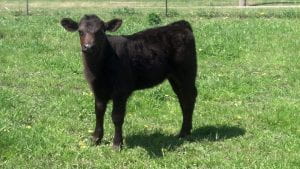
It’s a good time to be in the cattle business.
– Garth Ruff, Beef Cattle Field Specialist, OSU Extension
Over the past few months, I have had the opportunity to speak at several field days across Ohio and during these events have had many conversations regarding the current state of beef industry.
A sampling of those questions include “Should I grow my cow herd by retaining xxx many more heifers?”, “How has the Western drought impacted beef production in Ohio?”, or “How can I make adjustments in my current production system to improve efficiency with the cow herd?”
Those are all good questions and help to confirm my thoughts, that the best teaching opportunities are often on farms where we can generate discussions between producers.
While I can work through those questions with producers, it certainly helps to have some background information on previous herd performance, farm records, and production goals. This information helps me as an educator better understand the decision-making process on the farm.
From a record keeping standpoint, I have found that there is room for improvement across the beef industry. While a producer may have production records: breeding dates, calving dates, inventory at different points, hay yields, etc., they may not have records of efficiency (conception rates, calf performance, feed:gain) and economics such as current balance sheets and annual profit/loss statements. One on one conversations about future farm decisions are great, however having the proper records are key to the success of those discussions and setting future farm goals.
Now to the questions at hand. I do believe now is an opportune time to retain heifers in Ohio, if feed is readily available. Consider retaining heifers to replace less productive females or to increase cow numbers. Given recent heifer placements into Western feedlots and the large number of cows culled due to drought, this cattle market is poised to be strong for a couple of years. As things currently stand, so long as external forces don’t negatively affect the marketplace, there looks to be potential for those interested in increasing cow numbers.
A few weeks ago, USDA published the July Cattle Inventory, which showed lower year-over-year inventory. This is the first time that total cattle inventory has been less than 100 million head since 2015, with beef cow inventory down 2.4 percent from one year ago.
If not looking to expand the cow herd, focusing on improving efficiency across your production system is a good place to start. Cull cow and bull prices are strong, genetic improvement should be considered when making animal-based decisions.
As I have said many times, heifer development is a bottle neck for many small herds. If we cannot manage developing heifers in a separate group from mature cows, consider purchasing bred heifers. Even though the value of replacement female is likely to have increased some, the cost to raise them has also increased. Too often I hear the fears of “importing disease” when buying heifers. If purchasing replacements from a reputable source, they should come with a known health status.
I have had similar conversation about buying hay this summer. Making hay is a double-edged sword for many as it is a necessity but is also costly. While some worry about “importing weeds”, buying hay has economic benefits that out weight that risk if done properly.
Just like with replacement females, buy hay only from reputable producers that have completed a forage analysis. Purchasing hay is a great way to import nutrients onto the farm. Don’t buy subpar, spoiled, or excessively weathered hay. I curiously scroll Facebook Marketplace often, and there is a lot of weathered, outside stored round bales on there for sale, at what appears to be low cost. Even though it is cheap on a per bale basis, it ends up being more costly per pound of nutrients. Remember that cattle eat pounds of dry matter, not bales of hay.
I look forward to visiting more of your counties as Extension programming picks up this fall and come see our livestock education area on the East end of Farm Science Review this year.
Looking forward, it’s a good time to be in the cattle business. I feel for those in the West that have had to make difficult decisions due to the lack of moisture. Keep an eye on the markets, as they do change. Think about how to add value to calves being sold later this fall, and how to improve efficiency of your operations going forward.